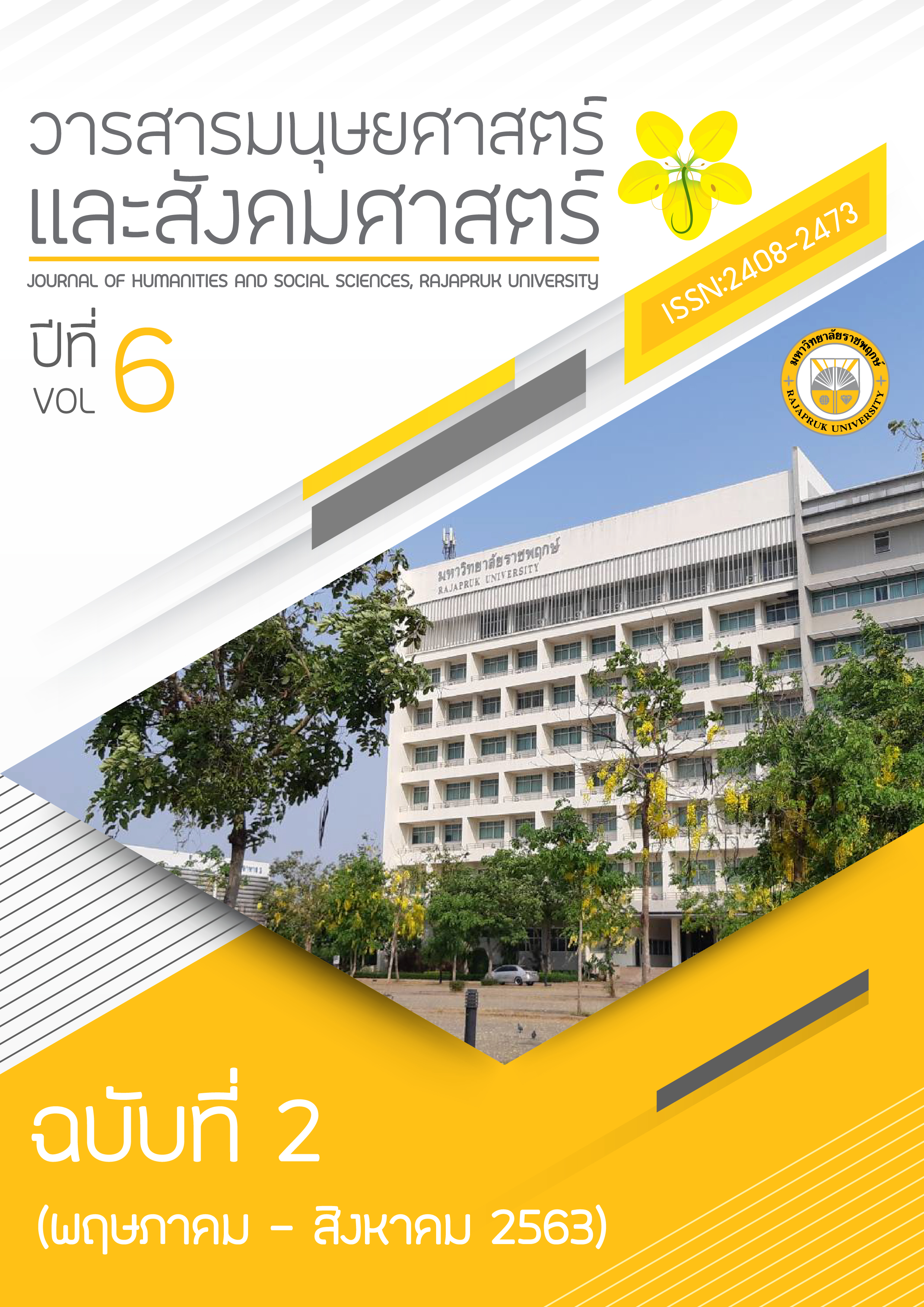Factors Reducing the Spread of Fake News on Social Media
Main Article Content
Abstract
The research objective is study about factors reducing the spread of fake news on social media. It is consist of demography factor, subscribers factor, news publisher factors, social media factor, and government factor. The group sample is use Convenience Sampling method who read fake news on social media, amount 412 person. The result is indicate, the difference of Age and Education Level in Demography factor at level of significance 0.05, it has an effects to Reducing the Spread of Fake News on Social Media. Moreover, the other factors which has the most effect to Reducing the Spread of Fake News on Social Media is Subscribers factor, News publisher factors, Social Media factor, and Government factor in order so, in order of Correlation coefficient is 0.355, 0.126, 0.119 and 0.104 also have the positive effect to Reducing the Spread of Fake News on Social Media.
Article Details
References
เฉลิมชัย ก๊กเกียรติกุล และ ธัญญนนทณัฐ ด่านไพบูลย์. (2561). ข่าวลวง: ปัญหาและความท้าทาย. กรุงเทพฯ: วารสารวิชาการ กสทช. ประจำปี 2561.
นันทิกา หนูสม. (2560). ลักษณะของข่าวปลอมในประเทศไทยและระดับความรู้เท่าทันข่าวปลอมบน เฟซบุ๊กของผู้รับสารในเขตกรุงเทพมหานคร. วิทยานิพนธ์ปริญญานิเทศศาสตรมหาบัณฑิต สาขาวิชาการสื่อสารเชิงกลยุทธ์ คณะนิเทศศาสตร์ มหาวิทยาลัยกรุงเทพ.
ภัสวลี นิติเกษตรสุนทร. (2546). ความรู้เบื้องต้นเกี่ยวกับการสื่อสารและพฤติกรรมการสื่อสาร เอกสารการสอนชุดวิชาทฤษฎีและพฤติกรรมการสื่อสาร. นนทบุรี: สำนักพิมพ์มหาวิทยาลัยสุโขทัยธรรมาธิราช.
สกุลศรี ศรีสารคาม. (2557). จริยธรรมการใช้สื่อออนไลน์และสื่อสังคม ในกระบวนการสื่อข่าวของสื่อไทยในยุคดิจิทัล. กรุงเทพฯ: สภาการหนังสือพิมพ์แห่งชาติ.
Blair, et al. (2019). Real Solutions for Fake News? Measuring the Effectiveness of General Warnings and Fact-Check Tags in Reducing Belief in False Stories on Social Media. Journal of Economic Perspectives, 31: 20-22.
Cherilyn Ireton (Eds.). (2018). JOURNALISM, ‘FAKE NEWS’ & DISINFORMATION Handbook for Journalism Education and Training. United Nations Educational, Scientific and Cultural Organization (UNESCO).
Grant Gross. (2018). Fake News Spreads Fast, But Don’t Blame the Bots Retrieved on 28th January 2020, from: https://www.internetsociety.org/blog/2018/03/fake-news-spread-fast-dont-blame-bots/
Hunt Allcott and Matthew Gentzkow. (2017). Social Media and Fake News in the 2016 Election. Journal of Economic Perspectives, 31(2) March-June 2017: 211 - 236.
J.S. Chitode. (2006). Digital Signal Processing. India: Technical Publications.
Kantas TNS. (2017). Connected Life 2017 Retrieved on 17Th June 2019 from: http://connectedlife.tnsglobal.com/
Kietzmann, et al. (2011) Social media? Get serious! Understanding the functional building blocks of social media. Business Horizons, 54(3) May–June 2011: 241-251.
LivePerson, Inc. (2017). Gen Z and Millennials now more likely to communicate with each other digitally than in person Retrieved on 30th January 2020, from: https://pr.liveperson.com/index.php?s=43&item=504
Tomi Pesonen. (2018). The effects of fake news on consumer trust in social media marketing. Bachelor’s Thesis of Business Administration, Marketing Metropolia University of Applied Sciences.
We Are Social. (2019). Digital in 2020. Retrieved on 30th January 2020, from: https://wearesocial.com/blog/2020/01/digital-2020-3-8-billion-people-use-social-media.


